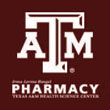Top 50 Public Pharmacy Schools in the US

 31. Texas A&M Health Science Center Irma Lerma Rangel College of Pharmacy, Kingsville, Texas
31. Texas A&M Health Science Center Irma Lerma Rangel College of Pharmacy, Kingsville, Texas
The Texas A&M Health Science Center Irma Lerma Rangel College of Pharmacy, on the Texas A&M University-Kingsville campus, was established in 2006 in response to the shortage of pharmacists in the border region of Texas. It is ranked in the Top 50 for pharmacy programs in the country within a record time, as per the recent U.S. News and World Report rankings. The College operates from a three-story, 63,000-square-foot facility and it consists of two departments—the Department of Pharmacy Practice and the Department of Pharmaceutical Sciences. Offerings include the doctorate in pharmacy and a Dual Pharm.D./MBA program.
The professional student pharmacists at the Texas A&M Rangel College of Pharmacy attain and practice their skills with the largest preceptor network in the state of Texas, 915 members strong.
Today, 44 percent of the college’s graduates have returned to South Texas to help underserved populations. The college’s leadership strives to entrench a culture of excellence, education, research, practice and patient care to each professional student enrolled.
Tuition for the Professional Years 1-3 (10 months/per year) is $7,632 for Texas residents, and $45,540 for non-residents. Tuition for year 4 (11 months) is $8,056 for Texas residents, and $48,070 for non-residents.
 32. University of Kansas School of Pharmacy, Lawrence, Kansas
32. University of Kansas School of Pharmacy, Lawrence, Kansas
The University of Kansas (KU) was established in 1866. Home to more than 28,000 students, KU consists of five campuses including Lawrence, Kansas City, Overland Park, Wichita, and Salina, Kansas. The main campus, which sits on 1,000 acres, houses 13 schools offering more than 345 degree programs in 200 fields.
The University of Kansas School of Pharmacy and School of Medicine are the only pharmacy and medical schools in the State of Kansas. Established in 1885, the School of Pharmacy was the university's first professional program and the third public school of pharmacy in the U.S. The School offers the Pharm.D., and M.S. and Ph.D. degrees in Medicinal Chemistry, Pharmacology & Toxicology, and Pharmaceutical Chemistry. The school also offers a M.S. in Pharmacy Practice and a Pre-pharmacy program.
The Pharm.D. program is offered at the Lawrence and Wichita, Kansas campuses. The Lawrence campus is home to 150 students and the Wichita campus is home to 20 students. Tuition for the School of Pharmacy (both locations) is $14,575.50 for 18 credit hours.
 33. University of Wyoming School of Pharmacy, Laramie, Wyoming
33. University of Wyoming School of Pharmacy, Laramie, Wyoming
The University of Wyoming (UW) was established in 1886. This top-tier research university ranks among the nation's Top Colleges and Universities by U.S. News & World Report, Princeton Review, and Forbes and it is also listed among the nation’s Top Adventure Colleges by Outside Magazine. Home to nearly 14,000 students, UW offers more than 200 areas of study across seven colleges and “multiple interdisciplinary institutes and schools.”
Among the University of Wyoming’s collection of colleges and schools is the School of Pharmacy of the College of Health Sciences. Founded in 1946, the University of Wyoming School of Pharmacy is home to 52 students and it offers the Pharm.D. degree. Students interested in the obtaining a Pharm.D. and an MBA may opt for the joint Pharm.D./MBA. Tuition for the UW School of Pharmacy is $14,322 for residents (FT - Per Year (12+ Credits/Semester) and $28,908 for non-residents.
 34. Oregon State University College of Pharmacy, Corvallis, Oregon
34. Oregon State University College of Pharmacy, Corvallis, Oregon
Established in 1868, Oregon State University (OSU) sits on a 400-acre campus just 90 miles from Portland. Home to more than 26,000 students from 50 states and 89 countries, Oregon State University offers more than 200 undergraduate and 100 Graduate programs across 12 colleges.
Located at the main campus in Corvallis, the Oregon State University College of Pharmacy has been a member of the OSU family for over a century. The College offers the Pharm.D. and Ph.D. degrees in Pharmaceutical Research and Medical Chemistry Research. Although the Pharm.D. program is located at OSU’s Corvallis campus, pharmacy students study for two years at OSU, and then spend their third year at Oregon Health & Science University in Portland, Oregon.
In addition to the Pharm.D., College of Pharmacy offers an MBA in Executive Leadership for Pharmacy Professionals and Leaders, and of course, a Pre-pharmacy program
Tuition for the Oregon State University College of Pharmacy is $6,720 per term for Oregon residents and $11,568 per term for non-residents. Tuition for the MBA program is $35,760 per year.
 35. Texas Tech University Health Sciences Center School of Pharmacy, Amarillo, Texas
35. Texas Tech University Health Sciences Center School of Pharmacy, Amarillo, Texas
Texas Tech University was established in 1923 as Texas Technological College. Two years later, the school, which consisted of 16 buildings, opened its doors to an impressive 914 students. Today, Texas Tech University sits on a nearly 2,000-acre campus and it is home to 32,611 students, making it the “largest comprehensive higher education institution in the western two-thirds of the state of Texas.”
Texas Tech is also the only campus in the state to house a major university, a law school, and a medical school. Named a “Best in the West” college by Princeton Review (2014), Texas Tech offers more than 200 academic programs across 12 colleges and schools. This includes the School of Pharmacy.
The Texas Tech University School of Pharmacy is housed at the university’s Health Sciences Center. Established in 1969, the School ranked among the Top 25 for Research Funding among U.S. pharmaceutical research programs. It consists of three departments—the Department of Pharmaceutical Sciences, the Department of Biomedical Sciences, and the Department of Immunotherapeutics and Biotechnology and offers the Pharm.D., and a Graduate program in Pharmaceutical Sciences.
Resident tuition for the Texas Tech University School of Pharmacy is $8,716.68 and $17,140.68 for non-residents (2012-2013 school year).
 36. Wayne State University Eugene Applebaum College of Pharmacy & Health Sciences, Detroit, Michigan
36. Wayne State University Eugene Applebaum College of Pharmacy & Health Sciences, Detroit, Michigan
Wayne State University was established in 1868. It is the State of Michigan’s only urban research university and one of the largest urban research universities in the country. Wayne State University is also listed among the Top Three Urban Research Universities in the U.S.
The University, which sits on a 191-acre campus, is located in Detroit's Midtown neighborhood. Home to nearly 30,000 students, the school offers 370 academic programs across 13 colleges and schools. This includes the Eugene Applebaum College of Pharmacy & Health Sciences.
The College of Pharmacy & Health Sciences at Wayne State University was established in 1891 as “Detroit College of Medicine.” The College houses three academic departments, including Fundamental & Applied Sciences, Health Care Sciences, and Pharmacy. Offerings include the Pharm.D., and M.S. and Ph.D. degrees in Pharmaceutical Sciences with specializations in Medicinal Chemistry, Pharmaceutics, and Pharmacology & Toxicology.
Resident tuition for the Pharm.D. program is $20,298.70 and $38,789.10 for non-residents. Resident tuition for the Ph.D. program is $40,600 and $78,856.30 for non-residents. Tuition for the M.S. in Pharmaceutical Science is $20,434.30 for residents and $39,562.30 for non-residents.
 37. Washington State University College of Pharmacy, Pullman-Spokane, Washington
37. Washington State University College of Pharmacy, Pullman-Spokane, Washington
Washington State University (WSU) ranks among the nation’s Top 60 Public Research Universities by U.S. News & World Report. Established in 1890, the school opened its doors to as Washington Agricultural College and School of Science to just 13 collegiate and 46 preparatory students. Today, WSU is home to 26,000 students enrolled in more than 375 academic programs throughout 11 colleges and the WSU Graduate School. This includes the College of Pharmacy.
Washington State University features four traditional campuses and one global campus (online). Campuses include Spokane (48 acres), Tri-Cities (202 acres), Vancouver (351 acres), and the main campus—Pullman (1,742 acres). The College of Pharmacy conducts classes the Pullman and Spokane campuses. Pharm.D. students spend their first three years at the Pullman campus and the fourth year at the Spokane campus. Other offerings include a Ph.D. in Pharmaceutical Sciences and a Pre-Pharmacy program—offered through University College.
Resident tuition for the first three years is $20,512 per year and $37,166 per year for non-residents. Resident undergraduate tuition is $11,396 per year and $24,478 per year for non-residents.
 38. University of Arkansas College of Pharmacy, Little Rock, Arkansas
38. University of Arkansas College of Pharmacy, Little Rock, Arkansas
The University or Arkansas was established in 1871. When it opened to the public in 1872, the school had just eight students and three faculty members. Today, this land-grant and space-grant institution is home to nearly 25,000 students and the school’s 410-acre campus is listed as one of the greenest in the country.
The University of Arkansas, often called “UArkansas” or “You of A,” houses eight colleges and schools that offer more than 200 undergraduate, Graduate, and Doctorate programs. The school also offers 20 Certificate programs.
The University of Arkansas College of Pharmacy was established in the early 1950s. The College is home to 481 students and it offers the Pharm.D., and a M.S. and Ph.D. with Tracks in Pharmaceutical Sciences and Pharmaceutical Evaluation & Policy (PEP).
Resident tuition for the University of Arkansas College of Pharmacy is $14,020 per year and $14,020 per semester for non-residents (full-time). Tuition for residents carrying nine hours or less is $701 per semester hour. Tuition for non-residents carrying nine hours or less is $1,402 per semester hour.
 39. University of Oklahoma College of Pharmacy, Oklahoma City-Tulsa, Oklahoma
39. University of Oklahoma College of Pharmacy, Oklahoma City-Tulsa, Oklahoma
University of Oklahoma College of Pharmacy was established in 1890. By 1895, the school had attracted its first 100 students. Today the school, which sits on a 4,000-acre campus, is home to more than 30,000 students enrolled in 150 majors.
The University’s College of Pharmacy was established in 1893. The College offers several degree programs including the Pharm.D., and M.S. and Ph.D. degrees with specializations in Pharmaceutics, Pharmacy Administration, Medicinal Chemistry, Nuclear Pharmacy, and Pharmacology & Toxicology. The College of Pharmacy also offers a Pharm.D./M.S. dual degree.
Resident tuition for the University of Oklahoma College pf Pharmacy is $14,013 for years 1-3 (annually) and $18,262.25 for year 4. Non-resident tuition is $31,441 per year for years 1-3 and $40,555.51 for year 4.
 40. University of Houston College of Pharmacy, Houston, Texas
40. University of Houston College of Pharmacy, Houston, Texas
The University of Houstonwas founded in 1927. This public research and teaching institution consists of a 667-acre campus that houses nearly 40,000 students. Academic offerings include nearly 300 programs across 12 academic colleges and an interdisciplinary Honors College.
The University of Houston College of Pharmacy is one of the school’s top colleges. Established in 1946, the College offers the Pharm.D. and M.S. and Ph.D. degrees in Pharmacy Administration. The College of Pharmacy also offers a Ph.D. in Pharmacology or Pharmaceutics, a combined Pharm.D./Ph.D. in Pharmacology or Pharmaceutics, and a combined Pharm.D./M.S.
Resident tuition for the Pharm.D. program is $552 per credit hour and $906 per credit hour for non-residents. Resident tuition for Pharmacy students enrolled in M.S. or Ph.D. programs is $423 per credit hour and $777 per credit hour for non-residents.
Pages

- Facebook Like
- Google Plus One
- 272063 reads


